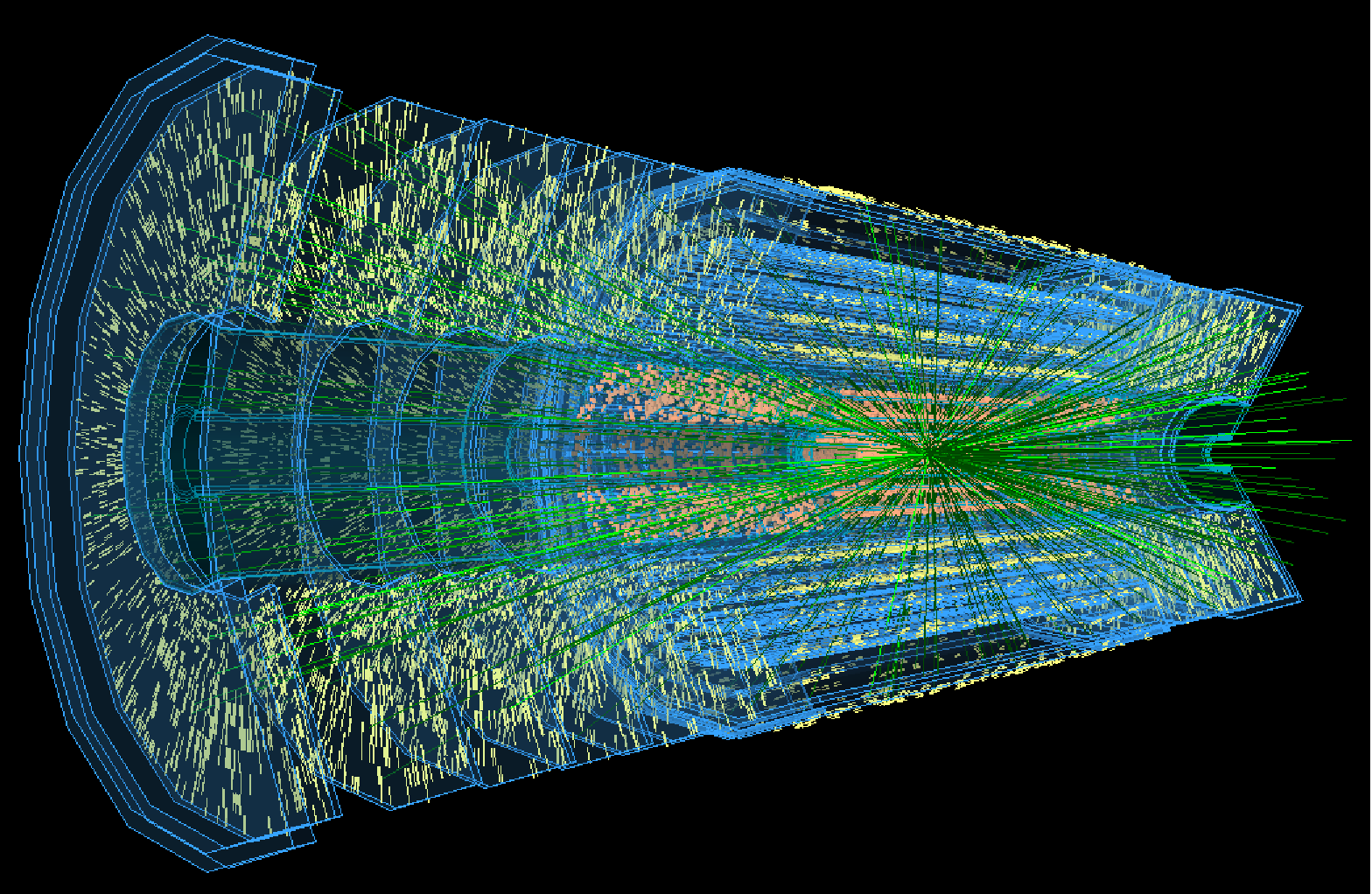CONSTRUINDO UMA IMAGEM DE TEMPO DOS PRIMEIROS 10 IOCTOSEGUNDOS APÓS A COLISÃO DE PARTÍCULAS ELEMENTARES
O projeto YoctoLHC, um apelido para a imagem Yoctosecond da coletividade QCD usando observáveis a jato, é uma Subvenção Avançada do European Research Council, liderada pelo pesquisador espanhol Carlos A. Salgado. É organizado pelo IGFAE – Instituto Galego de Física de Altas Energias (Santiago de Compostela-Espanha), LIP-Laboratório de Instrumentação e Física Experimental de Partículas (Lisboa, Portugal) e JYVASKYLAN YLIOPISTO (Finlândia).

Light takes three yoctoseconds to cross a proton. To have an idea of how small this time is we can think that if the age of the universe was just a second, this time would still be one million times shorter than a blink of an eye. This tiny time is apparently enough for, in heavy ion collisions at CERN’s Large Hadron Collider (LHC), quarks and gluon to lose quantum coherence, interact among themselves and form the quark gluon plasma that permeated the entire universe microseconds after the Big Bang.
The project “Yoctosecond imaging of QCD collectivity using jet observables (YoctoLHC)” proposes a novel use of specific probes, highly energetic particle jets, to build a time image of the first 10 yoctoseconds of the collision and unravel the process of emergence of complexity from the elementary building blocks of Nature.
The project was awarded in April 2019 a 2.5 million euro Advanced Grant for a 5-year period by the European Research Council (ERC).
YoctoLHC is led by Carlos Salgado, professor of Theoretical Physics at the University of Santiago de Compostela and director of the Galician Institute of High Energy Physics (IGFAE), and it is carried out by an international team with researchers from the Laboratory of Instrumentation and Experimental Particle Physics (LIP) and the University of Jyväskylä in Finland.Carlos Salgado was previously awarded with another European Research Council Starting Grant / Consolidator as principal investigator in 2011, Hot and dense QCD in the LHC era (HotLHC), hosted at the Universidade de Santiago de Compostela and CERN. The project run from January 2012 to December 2017 and it can be visited here.
OBJECTIVE
QCD is the only sector of the Standard Model where the exploration of the first levels of complexity, built from fundamental interactions at the quantum level, is experimentally feasible. An outstanding example is the thermalised state of QCD matter formed when heavy atomic nuclei are smashed in particle colliders. Systematic experimental studies, carried out in the last two decades, overwhelmingly support the picture of a deconfined state of matter, which behaves as a nearly perfect fluid, formed in a very short time, less than 5 yoctoseconds. The mechanism that so efficiently brings the initial out-of-equilibrium state into a thermalised system is, however, largely unknown.
Most surprisingly, LHC experiments have found that collisions of small systems, i.e. proton-proton or proton-lead, seem to indicate the presence of a tiny drop of this fluid in events with a large number of produced particles. These systems have sizes of 1 fm or less, or time-scales of less than 3 ys. To add to the puzzle, jet quenching, the modifications of jet properties due to interactions with the medium, has not been observed in these small systems, while jet quenching and thermalisation are expected to be controlled by the same dynamics.
Present experimental tools have limited sensitivity to the actual process of thermalisation. To solve these long-standing questions we propose, as a completely novel strategy, using jet observables to directly access the first yoctoseconds of the collision.
SUBJECTS
This strategy needs developments well beyond the state-of-the-art in three subjects:
- novel theoretical descriptions of the initial stages of the collision — the first 5 ys;
- jet quenching theory for yoctosecond precision, with new techniques to couple the jet to the surrounding matter and novel parton shower evolution; and
- jet quenching tools for the 2020’s, where completely novel jet observables will be devised with a focus on determining the initial stages of the collision.
PARTNERSHIPS
IGFAE

The Galician Institute for High Energy Physics (IGFAE) at the Universidade de Santiago de Compostela (USC) is a research institute accredited as María de Maeztu Unit of Excellence by the Spanish Ministry of Science. It hosts around 100 researchers, including more than 20 postdocs, 40 PhD students and two ERC grantees.
Puedes conocer el equipo que conforma este proyecto (aquí) y nuestras vacantes abiertas en la investigación (aquí).
LIP

UNIVERSITY OF JVYASKYLA
LANGUAGES
- The project in Galician
- The project in Spanish
- The project in Portuguese
- The project in Finnish
Program: H2020-EU.1.1. – EXCELLENT SCIENCE – European Research Council (ERC)Reference: ERC-2018-ADG – ERC Advanced Grant
